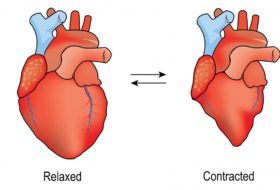PROTEIN STRUCTURE •
Amino Acid Structure
Interactions
Water
Hydrophobic Interaction
Van der Waals Interactions and London Dispersion Forces
Hydrogen Bonds
Secondary Structure
Protein Stability
Favorable (Good) Interactions
Unfavorable (Bad) Interactions
Temperature-Sensitive Mutations
Ligand-Binding Specificity
Global Conclusion
Proteins start out life as a bunch of amino acids linked together in a headto-tail
fashion—the primary sequence. The one-dimensional information
contained in the primary amino acid sequence of cellular proteins is
enough to guide a protein into its three-dimensional structure, to determine
its specificity for interaction with other molecules, to determine its
ability to function as an enzyme, and to set its stability and lifetime.
Remembering something about the structures of the amino acids is
just one to those basic language things that must be dealt with since it
crops up over and over again—not only in protein structure but later in
metabolism. You need to get to the point that when you see Asp you
don’t think snake but see a negative charge. Don’t memorize the amino
acids down to the last atom, and don’t spend too much time worrying
about whether glycine is polar or nonpolar. Methylene groups (–CH2–)
may be important, but keeping track of them on an individual basis is
just too much to ask. Organize the amino acids based on the functional
group of the side chain. Having an idea about functional groups of amino
acids will also help when you get to the biosynthesis and catabolism of
amino acids. Might as well bite the bullet early.




